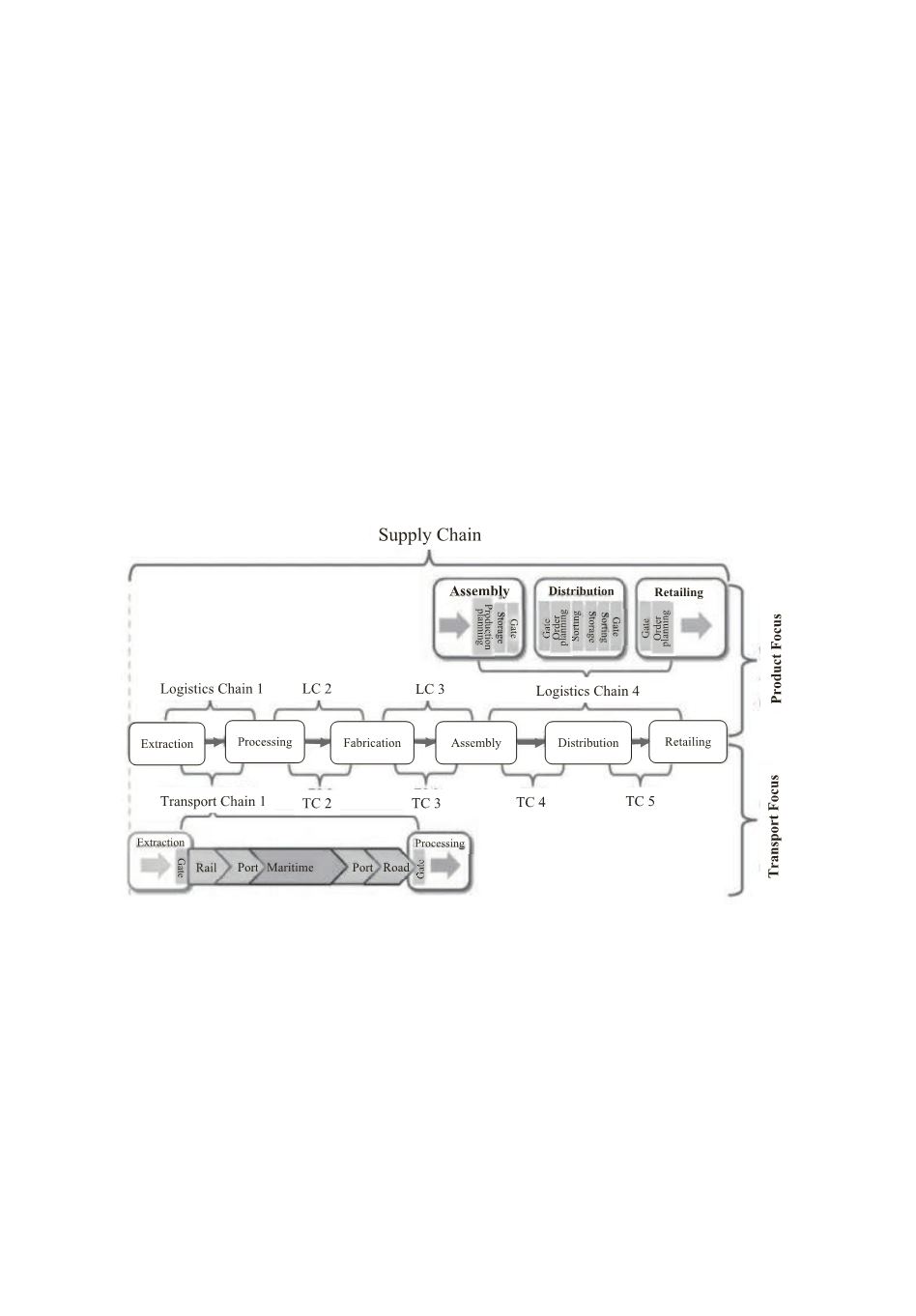

160
• Information for passengers.
• Vehicle fleet management.
• Incident management and support for emergency services.
• Electronic payment and tolling.
• Advanced technology inside vehicles.
To sum up, telematics and transport telematics will refer to the movement of
people and goods (objects of transport), using the appropriate means of transport
and technical and organisational solutions, which, by integrating information and
telecommunications solutions, will allow for appropriate management and control in
transport systems, increase the efficiency and safety of operation of these systems and
have a positive impact on the protection of the environment.
7.3 Applications of telematics solutions
The widest area of the application of telematics solutions in the supply chain is
obviously transport, which connects the individual links (see Figure 7.1).
Figure 7.1 The scope of the supply chain, logistics chain and transport chain [1]
Telematics provides a wide set of tools and services originating from information
and communication techniques that allow an increase in operational efficiency, improve
service reliability, management of infrastructure and safety and minimise the impact on
the environment and improve the quality of information services.
Intelligent transportation systems provide a set of strategies for the transportation
problems related to safety and congestion, while accommodating travel demands of
users and freight through the use of advanced communication, sensing, and information
processing technologies. When integrated into the transportation system’s infrastructure,
and into vehicles themselves, these technologies relieve congestion, improve safety, and
enhance productivity.
















